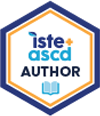
Event Information

The presentation is a back and forth between Pam expertly teaching participants a mathematical strategy followed by Liesl pointing out the brain science behind the teacher moves and task.
We begin by quickly setting expectations: that participants will actively engage in learning an important, but lesser understood fraction strategy and then Liesl will illuminate the particular things that Pam did to set ideal conditions for learning.
Pam will facilitate a Problem String, a highly interactive instructional routine from the dutch Realistic Mathematics Education that centers student thinking while giving learners a high-dose of important patterning so that participants make mental mathematical connections. Participants are presented with an open access problem and given a brief time to solve it. Pam will ask for volunteers to share their thinking and she will make that thinking visible, point-at-able, and discussable by writing live on her projected iPad. This continues with a series of short problems. The power is in the carefully crafted conversations and purposefully sequenced problems. Each sequence of problems is about 5 minutes long. Then Liesl will spend 5 minutes illuminating a specific area of brain science that supports that segment.
After each juncture where Liesl explains the brain science connections, participants will be invited to discuss for 2 minutes with a small group how the principles can be applied to their teaching in their classroom or leaders and coaches with their mentees.
The presentation will have 4 of these back and forth segments, ending with participants setting intentions for implementing the brain-science move(s) the order that makes the most sense in their situation.
The session ends with a 10 minute Question and Answer time, where Pam and Liesl will alternately field math and brain science questions.
Liesl McConchie is the coauthor of Brain Based Learning: Teaching the Way Students Really Learn (Corwin: https://us.corwin.com/books/brain-based-learning-3rd-edn-267771). She has also published several articles in leading education journals:
Teaching to the Whole Brain (ASCD: https://ascd.org/el/articles/teaching-to-the-whole-brain)
Motivating Students With the Brain in Mind (ASCD: https://ascd.org/el/articles/motivating-students-with-the-brain-in-mind)
Drawing a Positive Math Identity (NCTM: https://lieslmcconchie.com/wp-content/uploads/2024/03/mtlt-drawing-a-postive-math-identity.pdf)
Pam Harris is the author of Developing Mathematical Reasoning: Avoiding the Trap of Algorithms (Corwin: https://us.corwin.com/books/dmr-289132) and Building Powerful Numeracy for Middle & High School Students (Heinemann: https://www.heinemann.com/products/e02662.aspx). Her approach to teaching mathematics is based in part on Cathy Fosnot’s Context for Learning, Thomas Carpenter and colleagues' Cognitively Guided Instruction from Teaching Children Mathematics, and the Realistic Mathematics Education from the Fruedenthal Institute in the Netherlands.


